Figure shows a small block of mass m which is started with a speed v on the horizontal part of the bigger block of mas m placed on a horizontal floor. The curved part of the surface shown is semicircular. All the surfaces are frictionless. Find the speed of the bigger block when the smaller block reaches the point A of the surface.
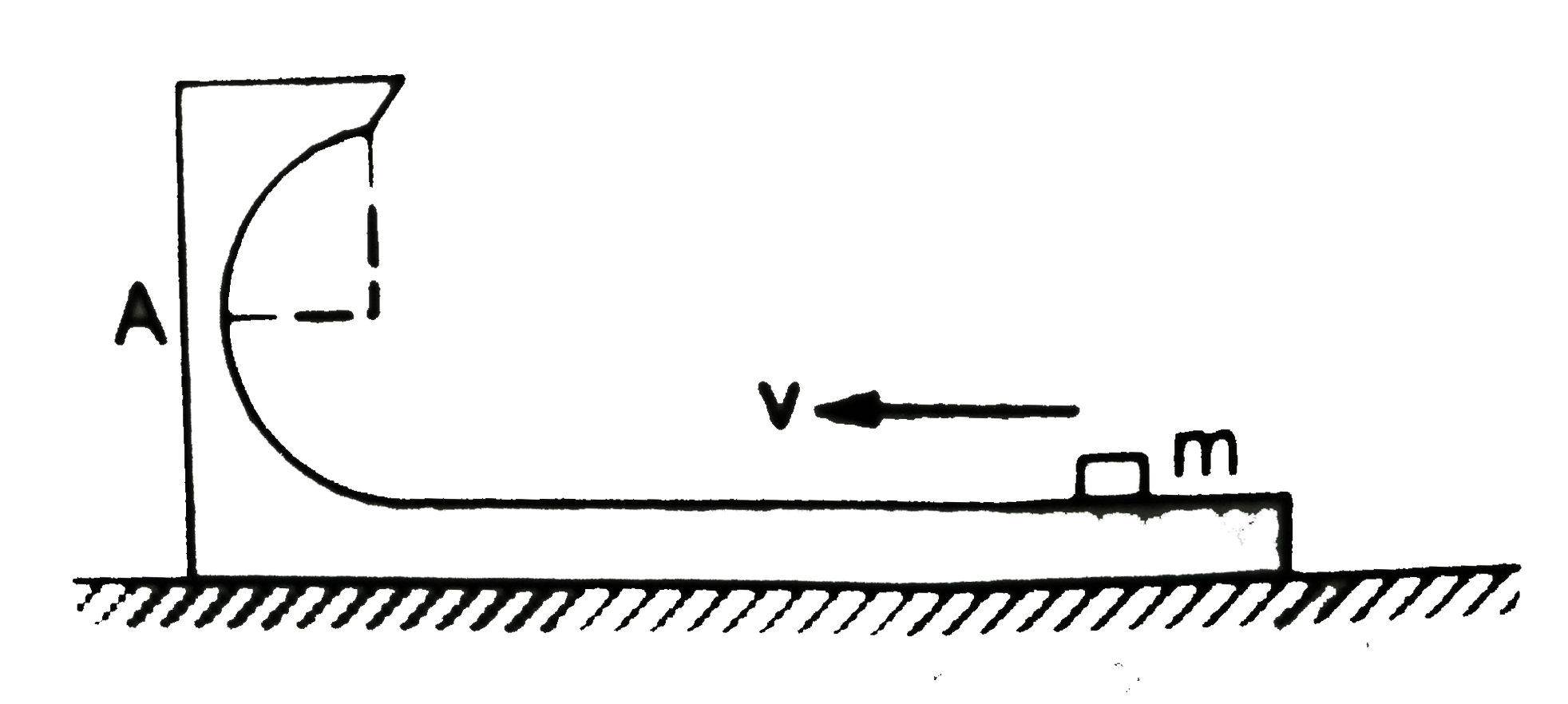 Solution in Tamil
Solution in Tamil
A small block of mass m which is started with a velocity V on the horizontal part of the biger block of mass M placed on a horizontal floor.
Since the small body of mass mis started with a velocity V in the horizontal edirection, so the total initial momentum at tehinitil position in the horizontl bigger block in From L.C.K m.
mv+M×O=(m+M)V
→V=mvm+M
Topper's Solved these Questions
Similar Questions
The centre of mass of a system of particles is at the origin. It follows that:
03:50View SolutionAn aluminium vessel of mass 0.5kg contains 0.2kg of water at 20∘C A block of iron of mass 0.2kgat100∘C is gently put into the water .Find the equilibrium temperature of the mixture, Specific heat capacities of aluminium , iron and water are 910Jkg−1K−1470Jkg−1K−1and4200Jkg−1K−1 respectively
10:14View SolutionFind the accelerationof the moon with respect to the eath from the following data, Distance between the earth and the moon =3.85×105 km and the time taken by the moon to complete one revolution around the earth =27.3days
10:44View SolutionA block of mass M is placed on the top of a bigger block of mass 10 M as shown in figure. All the surfaces are frictionless. The system is released from rest, then the distance moved by the bigger block at the instant the smaller block reaches the ground :
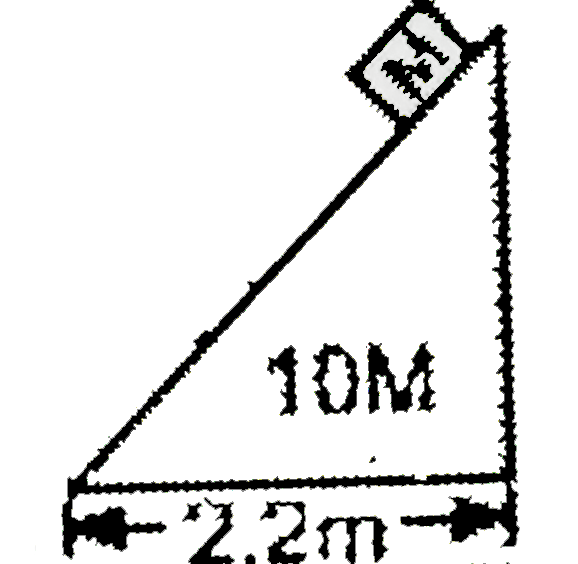 04:01View Solution
04:01View SolutionA block of mas m is placed on a triangular block of mas m, which in tunis placed on a horizontal surface as shown in figure. Assuming frictionless surfaces find the velocity of the triangular block when the smaller block reaches the bottom end.
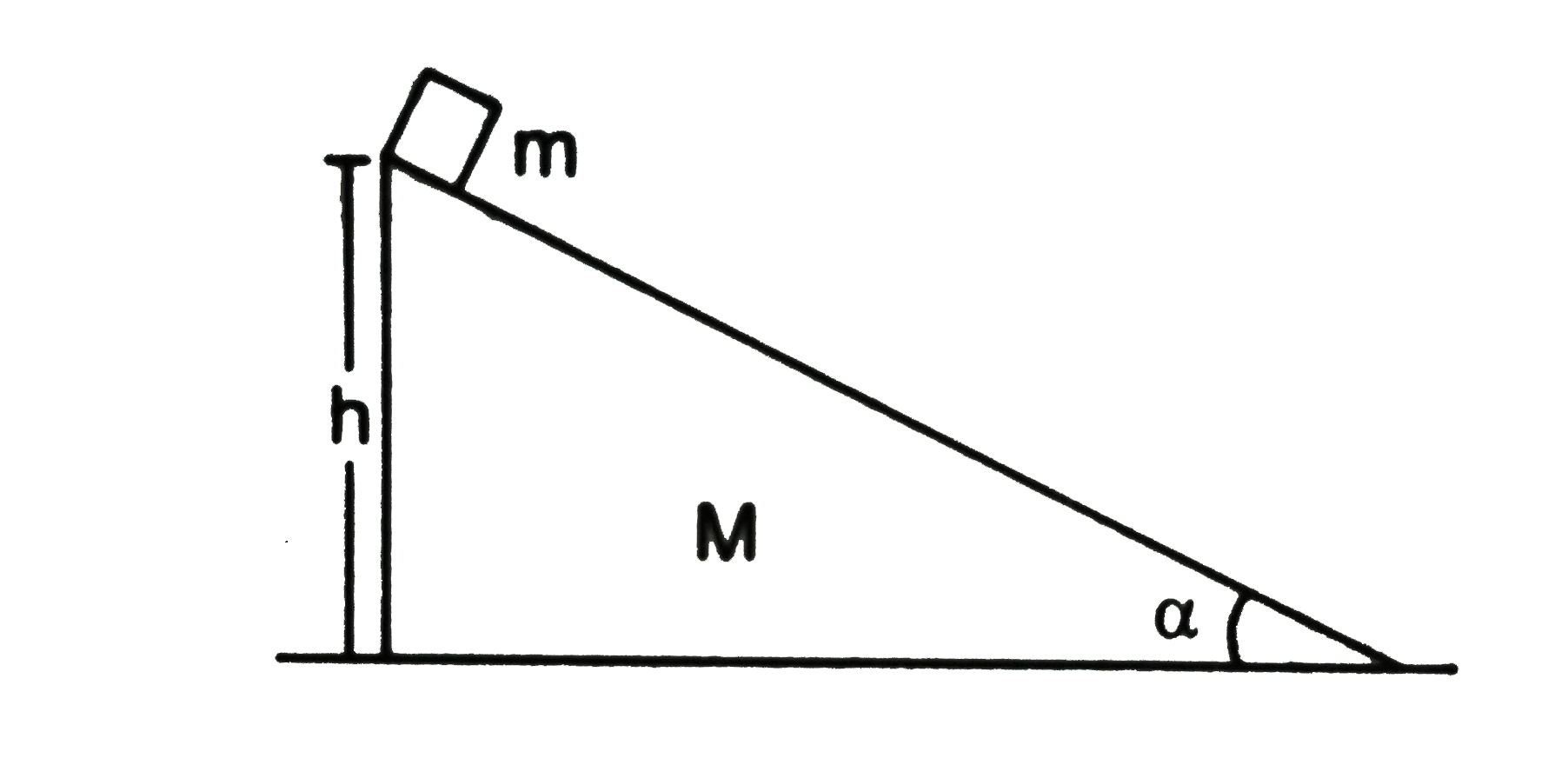 03:50View Solution
03:50View SolutionA block of mass m is kept over another block of mass M and the system rests on a horizontal surface. A constant horizontal force F acting on the lower block produces an acceleration (F)/(2(m+M)) in the sytem. The two blocks always move together. Consider displacement d of the system. a. Find the work done by friction on bigger block. b. Find the coefficient of kinetic friction between the bigger block and the horizontal surface. c. Find the frictional acting on the smaller block. d. Find the work done by the force of friction on the smaller block by the bigger block. e. Find the work done by static friction on bigger block.
05:04View SolutionFigure shows a block A of mass 6 m having a smooth semicircular groove of radius a placed on a smooth horizontal surface. A block B of mass m is released from a position in groove where its radius is horizontal. Find the speed of the bigger block when the smaller block reaches its bottom most position.
14:43View SolutionA block of mass M is placed on the top of a bigger block of mass 10 M as shown in figure. All the surfaces are frictionless. The system is released from rest, then the distance moved by the bigger block at the instant the smaller block reaches the ground :
 02:54View Solution
02:54View Solutionचित्र में एक M द्रव्यमान का बड़ा गुटका एक क्षैतिज सतह पर रखा हुआ दिखाया गया है। इसके क्षैतिज भाग पर द्रव्यमान का एक छोटा गुटका चाल से गति करना प्रारंभ करता है। चित्र में प्रदर्शित सतह का वक्राकार भाग अर्द्धवृत्ताकार है। सभी सतहों को घर्षणरहित मानें। जब छोटा गुटका सतह के बिंदु A पर पहुँचता है उस समय बड़े गुटके की चाल ज्ञात करें।
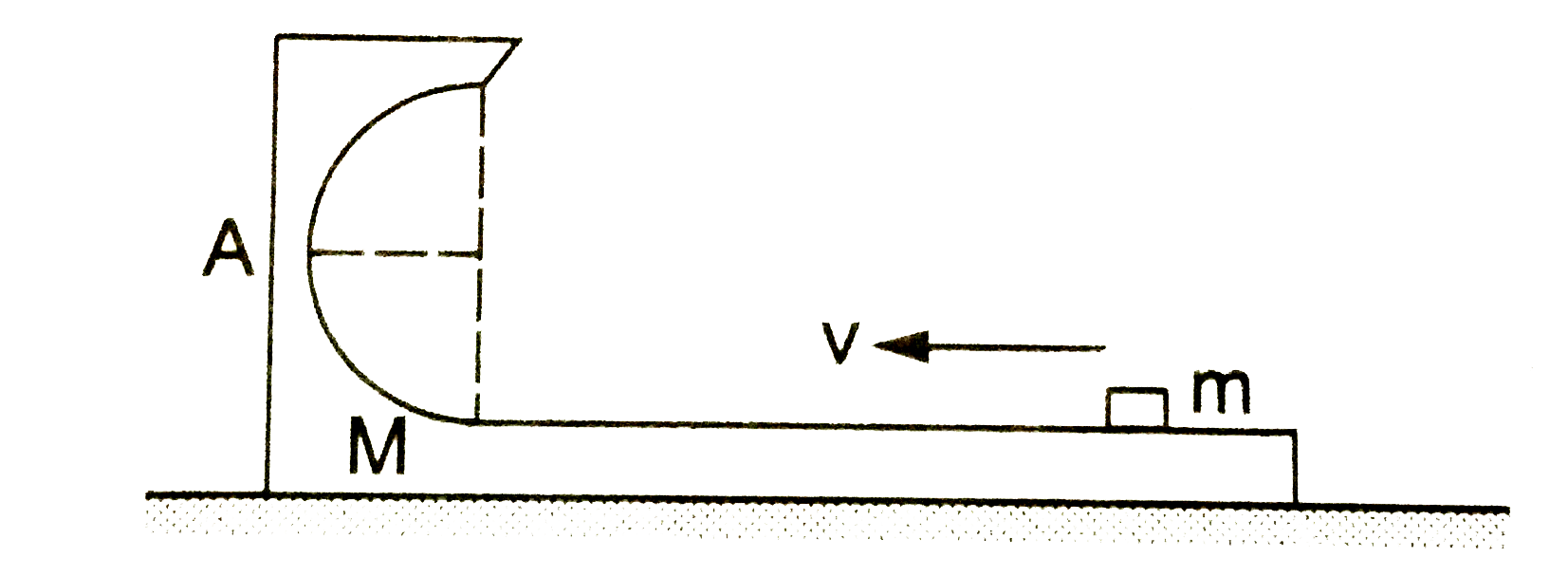 View Solution
View Solutionm द्रव्यमान का एक गुटका M द्रव्यमान के एक त्रिभुजाकार गुटक पर रखा हुआ है, जो स्वयं एक क्षैतिज सतह पर रखा गया है चित्र
जब छोटा गुटका क्षैतिज सतह पर पहुँचता है, उस समय त्रिभुजाकार गुटके का वेग ज्ञात करें। सभी सतहों को घर्षणरहित मानें।
 06:50View Solution
06:50View Solutionm द्रव्यमान का एक छोटा गुटका M द्रव्यमान के एक बड़े गुटके पर रखा हुआ है। इस बड़े गुटके की सतह दाहिने किनारे के पास क्षैतिज है तथा धीरे-धीरे मुड़ती हुई ऊर्ध्वाधर हो जाती है। बड़ा गुटका एक क्षैतिज सतह पर फिसल सकता है। छोटे गुटके को बड़े गुटके पर v चाल से चलाकर निकाय को स्वतंत्र छोड़ दिया जाता है। सभी सतहों को घर्षणरहित मानें।
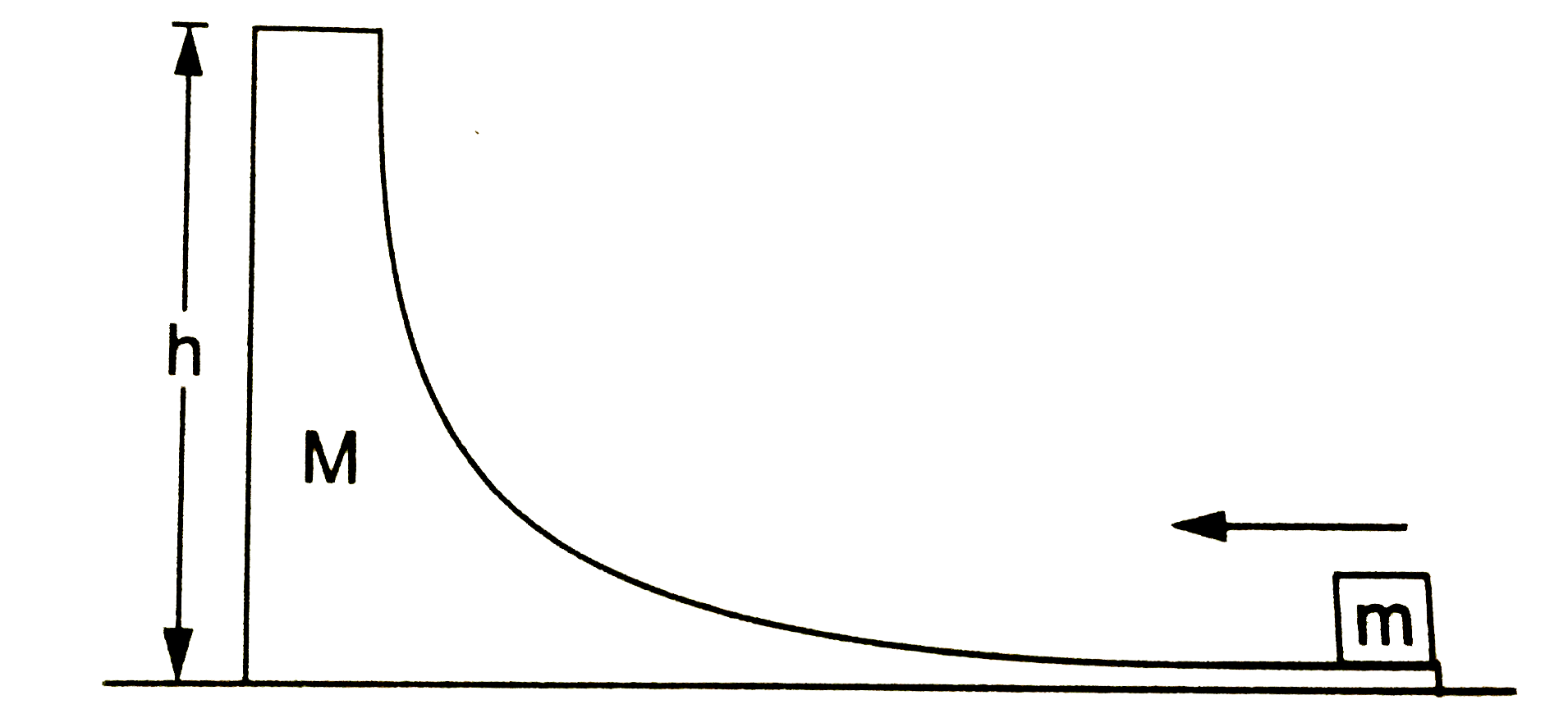
जब छोटा गुटका ऊर्ध्वाधर भाग पर पहुँचकर फिसल रहा हो, उस समय बड़े गुटके की चाल ज्ञात करें।03:56View SolutionA prism of mass M is placed on a horizontal surface. A block of mass m slides on the prism, which in tum slides on the horizontal surface. Assuming all surfaces to be frictionless, find the acceleration of block with respect to prism.
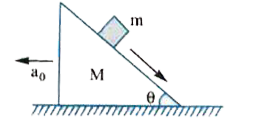 View Solution
View SolutionAll the surfaces shown in figure are assumed to be frictionless. The block of mass m slides on the prism which in turn slides backward on the horizontal surface. Find the acceleration of the smaller block with respect to the prism.
 04:12View Solution
04:12View SolutionA block of mass M is placed on the top of a bigger block of mass 10 M as shown in figure. All the surfaces are frictionless. The system is released from rest, then the distance moved by the bigger block at the instant the smaller block reaches the ground :
 View Solution
View SolutionA prism of mass M is placed on a horizontal surface. A block of mass m slides on the prism, which in tum slides on the horizontal surface. Assuming all surfaces to be frictionless, find the acceleration of block with respect to prism.
 08:28View Solution
08:28View SolutionA block of mass M is placed on the top of a bigger block of mass 10M as shown in fig. All the surfaces are frictionless. The system is releated from rest. The distance moved by the bigger block by the time the smaller block reaches the ground is
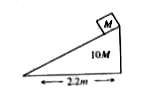 03:33View Solution
03:33View Solution
